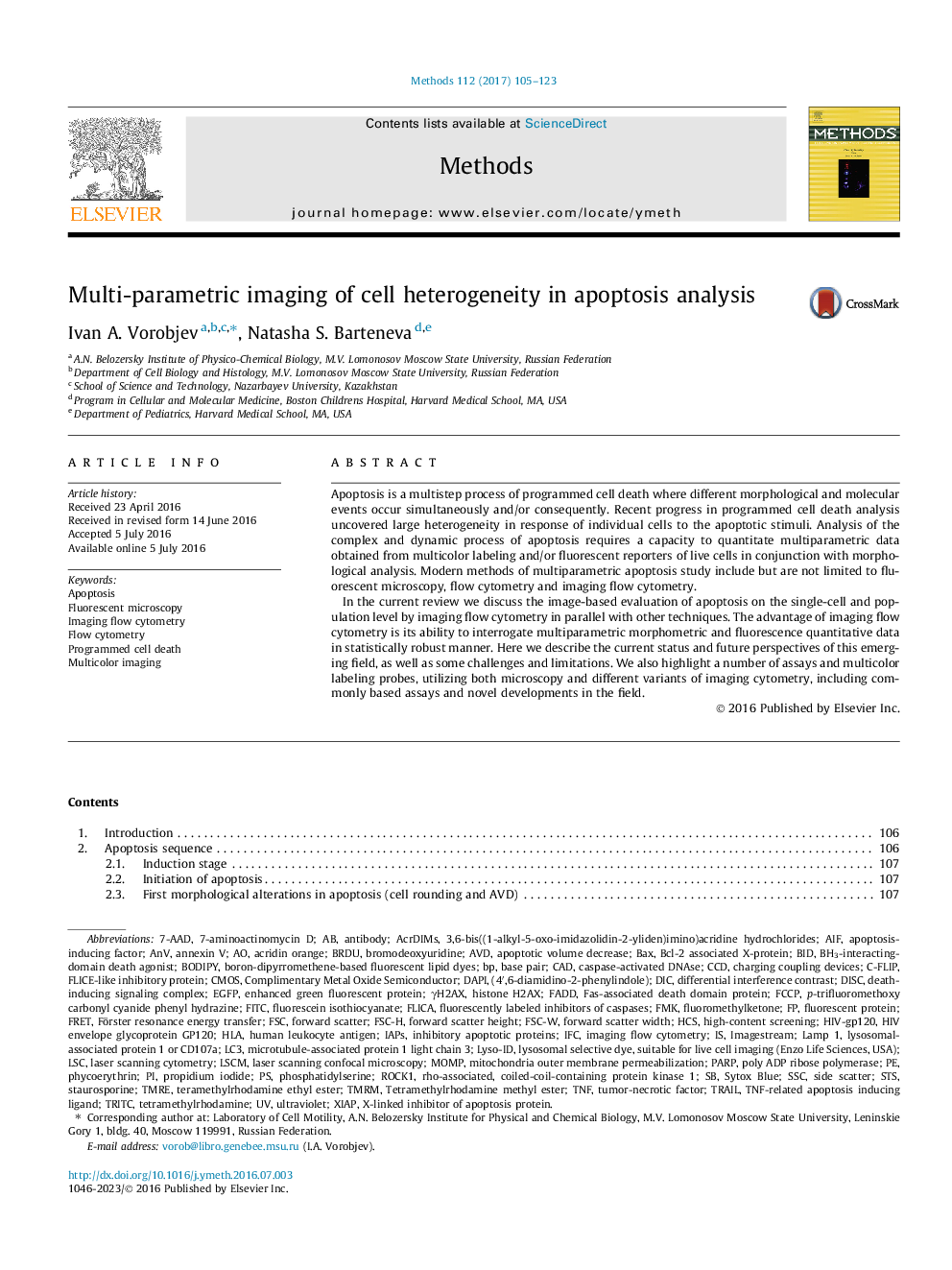| Article ID | Journal | Published Year | Pages | File Type |
|---|---|---|---|---|
| 5513539 | Methods | 2017 | 19 Pages |
â¢During apoptosis morphological and molecular events occur simultaneously and/or consequently.â¢Analysis of apoptosis requires quantitation of multiparametric data and morphological analysis.â¢Efficient analysis of apoptosis is based on combined fluorescent microscopy, flow and imaging flow cytometry.â¢Benefits and limitations of imaging flow cytometry in apoptosis analysis are discussed.â¢Dyes and protocols for multicolor labeling and data analysis are described.
Apoptosis is a multistep process of programmed cell death where different morphological and molecular events occur simultaneously and/or consequently. Recent progress in programmed cell death analysis uncovered large heterogeneity in response of individual cells to the apoptotic stimuli. Analysis of the complex and dynamic process of apoptosis requires a capacity to quantitate multiparametric data obtained from multicolor labeling and/or fluorescent reporters of live cells in conjunction with morphological analysis. Modern methods of multiparametric apoptosis study include but are not limited to fluorescent microscopy, flow cytometry and imaging flow cytometry.In the current review we discuss the image-based evaluation of apoptosis on the single-cell and population level by imaging flow cytometry in parallel with other techniques. The advantage of imaging flow cytometry is its ability to interrogate multiparametric morphometric and fluorescence quantitative data in statistically robust manner. Here we describe the current status and future perspectives of this emerging field, as well as some challenges and limitations. We also highlight a number of assays and multicolor labeling probes, utilizing both microscopy and different variants of imaging cytometry, including commonly based assays and novel developments in the field.
